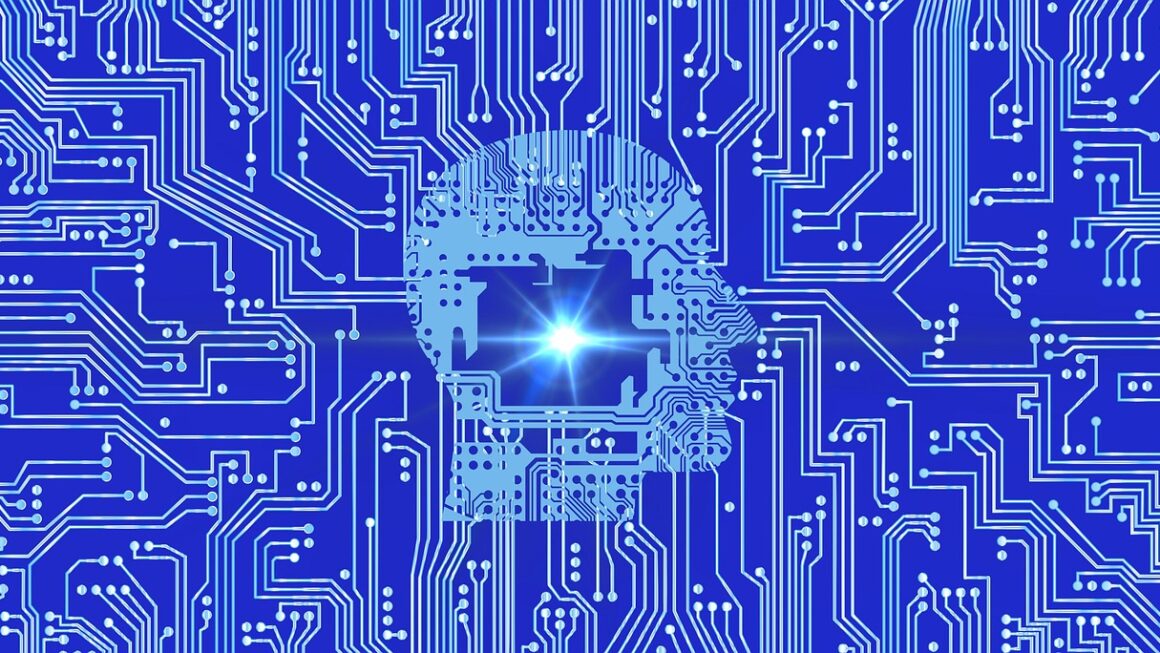Artificial intelligence (AI) is rapidly transforming our world, offering unprecedented opportunities across various industries. However, this technological revolution also introduces significant security challenges. As AI systems become more integrated into critical infrastructure, businesses, and even our personal lives, safeguarding them from malicious attacks is paramount. This article delves into the complexities of AI security, exploring potential threats, vulnerabilities, and essential strategies for building robust and resilient AI systems.
Understanding the AI Security Landscape
The Unique Challenges of Securing AI
Securing AI is not simply about applying traditional cybersecurity measures. AI systems present unique challenges due to their complex nature and reliance on vast amounts of data.
- Data Poisoning: Attackers can manipulate training data, causing AI models to learn biased or malicious patterns. For example, poisoning data used to train a facial recognition system could lead to misidentification of individuals.
- Adversarial Attacks: Subtle, often imperceptible, modifications to input data can fool AI models. Image recognition systems can be tricked into misclassifying images with minor alterations. A self-driving car’s vision system could be manipulated to misinterpret a stop sign, leading to an accident.
- Model Extraction: Attackers can steal or reverse engineer AI models, gaining access to valuable intellectual property or using them for malicious purposes. This is particularly concerning for proprietary algorithms used in financial trading or drug discovery.
- Privacy Concerns: AI models trained on sensitive data can inadvertently leak private information. Differential privacy techniques are essential for mitigating this risk.
- Lack of Explainability: The “black box” nature of some AI models makes it difficult to understand how they arrive at their decisions, hindering the detection and mitigation of security vulnerabilities.
The Growing Threat of AI-Powered Attacks
The increasing sophistication of AI technology means that adversaries are now capable of using AI for offensive purposes.
- Automated Phishing Campaigns: AI can be used to generate highly personalized and convincing phishing emails, increasing the likelihood of success.
- AI-Driven Malware: Malware can leverage AI to evade detection, adapt to security defenses, and autonomously spread through networks.
- Deepfakes for Social Engineering: Realistic AI-generated videos and audio can be used to impersonate individuals, spread disinformation, and manipulate public opinion.
- Reinforcement Learning for Penetration Testing: AI can be trained to automatically identify and exploit vulnerabilities in computer systems.
Key Vulnerabilities in AI Systems
Data-Related Vulnerabilities
The integrity and quality of data are crucial for the reliable performance of AI systems. Data-related vulnerabilities represent a significant attack vector.
- Insufficient Data Validation: Failing to properly validate input data can allow malicious actors to inject harmful data points, corrupting the model’s learning process.
- Data Leakage: Accidental or intentional exposure of training data can compromise the privacy and security of the AI system. Secure data storage and access control are essential.
- Data Bias: Biased training data can lead to discriminatory or unfair outcomes, raising ethical and legal concerns. Regularly audit and mitigate biases in your data.
Model-Related Vulnerabilities
The AI model itself can be vulnerable to attacks, requiring dedicated security measures.
- Overfitting: Overfitting occurs when a model learns the training data too well, resulting in poor generalization to new, unseen data. This makes the model susceptible to adversarial attacks.
- Model Theft: Gaining unauthorized access to an AI model can enable attackers to replicate, modify, or exploit the model for malicious purposes. Strong access controls and model encryption are crucial.
- Backdoor Attacks: Attackers can inject hidden triggers into AI models, allowing them to control the model’s behavior under specific conditions. Rigorous model testing and validation can help detect backdoors.
Infrastructure-Related Vulnerabilities
The infrastructure supporting AI systems, including hardware and software, can also be a target for attackers.
- Hardware Attacks: Exploiting vulnerabilities in the underlying hardware used for AI training and inference.
- Cloud Security Risks: Securing AI systems deployed in the cloud requires careful attention to cloud security best practices, including access control, encryption, and vulnerability management.
- Software Dependencies: Vulnerabilities in third-party libraries and software components used by AI systems can be exploited by attackers.
Best Practices for AI Security
Implementing Robust Data Security Measures
Protecting the data used to train and operate AI systems is crucial for ensuring their security and reliability.
- Data Encryption: Encrypt sensitive data both in transit and at rest.
- Access Control: Implement strict access control policies to limit access to data based on the principle of least privilege.
- Data Validation and Sanitization: Thoroughly validate and sanitize input data to prevent malicious data from corrupting the AI model.
- Data Provenance Tracking: Track the origin and lineage of data to identify and mitigate potential data poisoning attacks.
Securing the AI Model
Protecting the integrity and confidentiality of the AI model is essential for preventing model theft and manipulation.
- Model Encryption: Encrypt the AI model to prevent unauthorized access and reverse engineering.
- Adversarial Training: Train the AI model to be resilient against adversarial attacks by exposing it to perturbed data during training.
- Model Validation and Testing: Rigorously validate and test the AI model to identify vulnerabilities and ensure its robustness.
- Regular Model Updates: Continuously monitor and update the AI model to address newly discovered vulnerabilities.
Strengthening Infrastructure Security
Securing the infrastructure supporting AI systems is critical for preventing unauthorized access and data breaches.
- Vulnerability Management: Regularly scan for and remediate vulnerabilities in the hardware, software, and network infrastructure.
- Intrusion Detection and Prevention: Implement intrusion detection and prevention systems to detect and block malicious activity.
- Secure Configuration Management: Securely configure and manage all components of the AI infrastructure, including servers, networks, and databases.
- Incident Response Planning: Develop and implement a comprehensive incident response plan to address security incidents effectively.
AI Security Tools and Technologies
Data Security and Privacy Tools
- Differential Privacy Libraries: Tools that add noise to data to protect individual privacy while preserving the utility of the data for analysis. Example: Google’s Differential Privacy library.
- Data Anonymization Techniques: Techniques like pseudonymization and generalization to remove identifying information from data.
- Data Loss Prevention (DLP) Solutions: Systems that prevent sensitive data from leaving the organization’s control.
Model Security Tools
- Adversarial Attack Detection Tools: Tools that detect and mitigate adversarial attacks on AI models.
- Model Explainability Tools: Tools that provide insights into how AI models arrive at their decisions, facilitating the detection of biases and vulnerabilities. Example: SHAP (SHapley Additive exPlanations).
- Model Watermarking Techniques: Embedding hidden markers in AI models to prove ownership and detect model theft.
Infrastructure Security Tools
- Cloud Security Posture Management (CSPM) Tools: Tools that automatically assess and improve the security posture of cloud-based AI infrastructure.
- Security Information and Event Management (SIEM) Systems: Systems that collect and analyze security logs to detect and respond to security incidents.
- Network Security Monitoring Tools: Tools that monitor network traffic for malicious activity and anomalies.
Conclusion
AI security is a multifaceted and evolving field that requires a proactive and comprehensive approach. As AI continues to advance and become more pervasive, the need for robust security measures will only increase. By understanding the unique challenges and vulnerabilities of AI systems, implementing best practices for data, model, and infrastructure security, and leveraging specialized AI security tools and technologies, organizations can build resilient AI systems that are protected from malicious attacks. The future of AI depends on our ability to secure it effectively.




